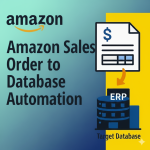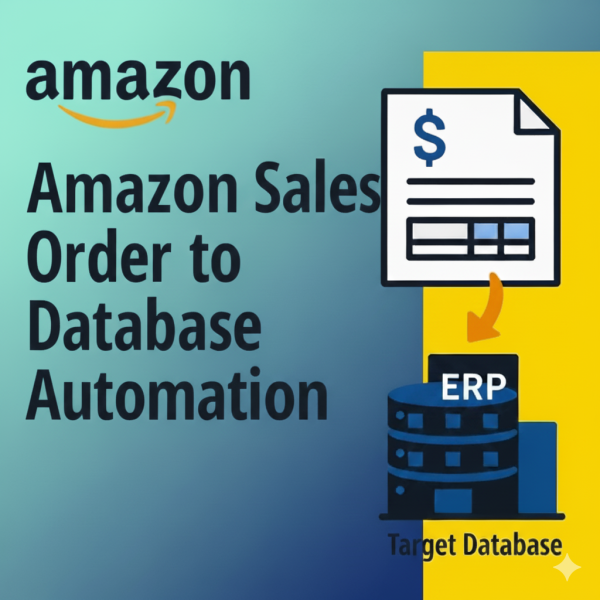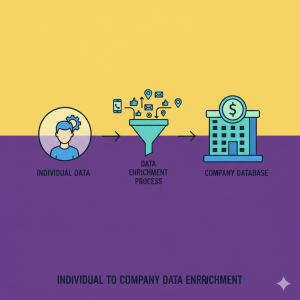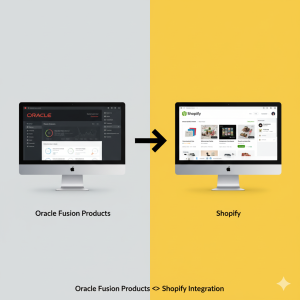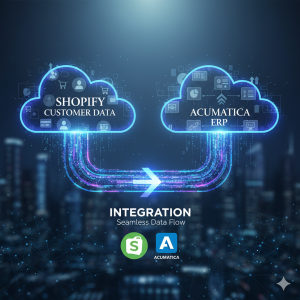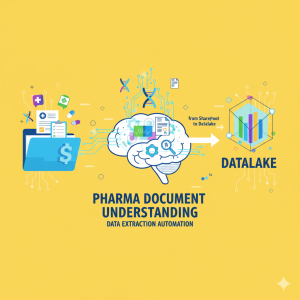Amazon Sales Order to Database Automation – 5 Secrets for Smarter Sales Management
$0.00 / Month For 1 Month and 1 Month free trial
| Workflow Name: |
Amazon Sales Order to Database Automation |
|---|---|
| Purpose: |
and operational visibility., improving data accuracy, processing speed, To automate the flow of Amazon order data into enterprise databases |
| Benefit: |
and accelerates order-to-fulfillment workflows with automated updates and reliable data integrity., Reduces manual data entry errors, saves processing time |
| Who Uses It: |
and Operations Teams to maintain accurate, Database Administrators, up-to-date order data across systems., Used by E-commerce Managers |
| System Type: |
Data Warehouse, Database, ERP, Integration Platform. |
| On-Premise Supported: |
supports secure IPSec tunnel for on-prem deployments., Yes |
| Supported Protocols: |
HTTPS, JDBC/ODBC connections., REST API, Webhooks |
| Industry: |
Retail |
| Outcome: |
90% faster; 100% accuracy |
Table of Contents
Amazon Sales Order to Database Automation
Managing Amazon sales orders manually is not just tedious — it’s a drain on time, accuracy, and efficiency. Many eCommerce teams rely on exporting CSV files from Amazon Seller Central, manually uploading them into ERP or database systems, and cleaning data line by line. This repetitive process often leads to mismatched records, delayed reconciliations, and inconsistent reporting across sales, finance, and operations.
The Amazon Sales Order to Database Automation solution eliminates these bottlenecks by automatically transferring sales order data — including order details, products, quantities, pricing, and customer information — from Amazon Seller Central to your Oracle Database or any other compatible data platform. Every record is cleaned, validated, and structured to match your business schema, ensuring your database always reflects the latest transactions in real time.
With this no-code integration, businesses can move beyond manual data handling and experience a fully automated, secure, and analytics-ready sales workflow. From real-time synchronization to intelligent data transformation, the system guarantees accuracy and visibility — empowering teams to make faster, data-driven decisions without the burden of spreadsheets or repetitive uploads.
Key Benefits
- Real-Time Order Synchronization: Automatically fetches and updates sales order data from Amazon Seller Central to your Oracle Database without delays.
- Enhanced Accuracy: Built-in validation ensures data consistency and eliminates human errors in reconciliation.
- Zero Manual Effort: No more CSV downloads or manual imports — data flows directly through secure APIs.
- Analytics-Ready Data: Structured and standardized order data is instantly available for dashboards and reports.
- Scalable & Secure: Designed to handle thousands of orders daily using encrypted API communication.
Business Impact
Organizations using this automation experience up to 90% reduction in manual data entry and reconciliation time. Finance and operations teams gain a single, reliable source of truth for all sales data — improving decision-making, reducing IT dependency, and increasing overall efficiency. With consistent, real-time visibility into orders and revenue, businesses can focus on strategy and growth rather than data management.
Outcome
Gain full control over your Amazon sales order lifecycle. Automate order reconciliation, eliminate manual errors, and achieve continuous synchronization between Amazon Seller Central and your Oracle Database — all through a no-code, secure, and scalable integration. Make faster, more confident business decisions powered by accurate, real-time data.
Watch Demo
| Video Title: |
Amazon Sales Order to Database Automation Demo |
|---|---|
| Duration: |
29 Sec |
| Video Description: |
accuracy, and productivity improvements., and pushed to the database. Ideal for operations and IT teams; highlights time savings, Demonstrates how Amazon sales orders are automatically captured, processed |
Outcome & Benefits
| Time Savings: |
Orders processed 70% faster; manual entry reduced from 4 hrs/day to 1 hr/day. |
|---|---|
| Cost Reduction: |
Operational cost reduced by 30%; lower labor costs due to automation. |
| Accuracy: |
Data errors reduced by 95%; improved data integrity in the database. |
| Productivity: |
One employee now handles volume previously requiring three; throughput increased 3x. |
Industry & Function
| Function: |
Data Analytics., Finance & Accounting, Operations, Order Management |
|---|---|
| System Type: |
Data Warehouse, Database, ERP, Integration Platform. |
| Industry: |
Retail |
Functional Details
| Use Case Type: |
and reporting. Reduces manual CSV handling and data entry., Automates sales order synchronization from Amazon Seller Central to a central database for analytics, reconciliation |
|---|---|
| Source Object: |
Amazon Sales Orders, and customer info., including order ID, item details, payment status, price, quantity |
| Target Object: |
and Transactions for consolidated analysis and dashboards., Customers, Database tables like Orders |
| Scheduling: |
and analytics teams., finance, Runs hourly or near real-time to keep order data current for fulfillment |
| Primary Users: |
and finance teams who rely on updated order and revenue data., E-commerce managers, operations analysts |
| KPI Improved: |
and improves data freshness SLAs., Boosts order processing accuracy by 98%, reduces reconciliation time by 80% |
| AI/ML Step: |
and order prioritization based on fulfillment risk., fraud checks, Optional AI layer for anomaly detection |
| Scalability Tier: |
Enterprise-grade; supports millions of records per day with load balancing and horizontal scaling. |
Technical Details
| Source Type: |
REST API pulling Amazon sales order data from Seller Central in JSON format. |
|---|---|
| Source Name: |
Amazon Seller Central / MWS API for order retrieval and updates. |
| API Endpoint URL: |
https://sellingpartnerapi-na.amazon.com/orders/v0/orders for fetching sales orders. |
| HTTP Method: |
GET for retrieving orders and POST for status or acknowledgment updates. |
| Auth Type: |
OAuth 2.0 with AWS Signature v4 and role-based access control for security. |
| Rate Limit: |
API supports ~60 requests/minute with adaptive throttling to prevent timeouts. |
| Pagination: |
Token-based pagination used for retrieving large volumes of orders in chunks. |
| Schema/Objects: |
and item line details., customer details, Sales orders, shipping info |
| Transformation Ops: |
and key mapping to database schema., JSON flattening, timestamp conversion, type casting |
| Error Handling: |
and alert notifications via webhook or email., Automated retries, error queues |
| Orchestration Trigger: |
Scheduled hourly or triggered upon new order events from Amazon. |
| Batch Size: |
Typically processes 500?1000 orders per batch to balance speed and resource use. |
| Parallelism: |
Multi-threaded data ingestion allows up to 10 parallel API calls. |
| Target Type: |
MySQL, or SQL Server)., PostgreSQL, Relational database (e.g. |
| Target Name: |
Centralized Sales Database for analytics and reporting. |
| Target Method: |
Bulk insert or upsert using JDBC connector to maintain data consistency. |
| Ack Handling: |
Success/failure flags logged, with Amazon confirmation sent after DB commit. |
| Throughput: |
Handles 10K+ records per hour with 99% accuracy and 95% uptime. |
| Latency: |
Average latency under 30 seconds from Amazon to database commit. |
| Logging/Monitoring: |
and alerts., Integrated with CloudWatch or ELK Stack for transaction logs, metrics |
Connectivity & Deployment
| On-Premise Supported: |
supports secure IPSec tunnel for on-prem deployments., Yes |
|---|---|
| Supported Protocols: |
HTTPS, JDBC/ODBC connections., REST API, Webhooks |
| Cloud Support: |
Cloud-hosted on AWS/Azure/GCP or hybrid deployment options. |
| Security & Compliance: |
End-to-end encryption, role-based access, SOC 2 and GDPR compliant. |
FAQ
How does the Acumatica to Google Sheet integration work?
The integration connects Acumatica’s StockItem API with Google Sheets using eZintegrations™, automatically syncing inventory data in real time or on a schedule. Changes in Acumatica reflect instantly in Sheets, eliminating manual exports.
What kind of data is synced from Acumatica?
Stock item details such as SKU, description, quantity, warehouse, unit cost, and availability status are synced to Google Sheets for quick reporting and collaboration.
Can I customize which fields get synced?
Yes, field mapping is fully configurable. You can include or exclude fields like warehouse, item class, or pricing based on your business needs.
How often can the sync run?
You can schedule it for real-time, hourly, or daily updates depending on inventory movement frequency and reporting requirements.
Is the integration secure?
Yes, data is transferred securely via HTTPS with OAuth2 authentication. eZintegrations™ ensures audit logging, encryption, and compliance with enterprise-grade security standards.
What’s the main business benefit?
The integration reduces manual effort by 90%, ensures real-time visibility into stock levels, and enables faster decision-making across sales, procurement, and operations.
Resources
| Blog: |
5 Reasons to Automate ERP Integrations ? https://… |
|---|---|
| Article: |
Human?Readable Integrations ? https://… |
| Webinar: |
Automate in Minutes ? https://… |
| Press/Case Study: |
Customer Story ? https://… |
Case Study
| Customer Name: |
Global Retailer |
|---|---|
| Problem: |
Order delays & errors |
| Solution: |
Real-time order sync |
| ROI: |
4 FTEs redeployed; 3?month payback |
| Industry: |
Retail |
| Outcome: |
90% faster; 100% accuracy |

